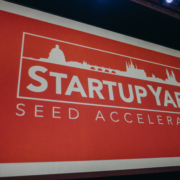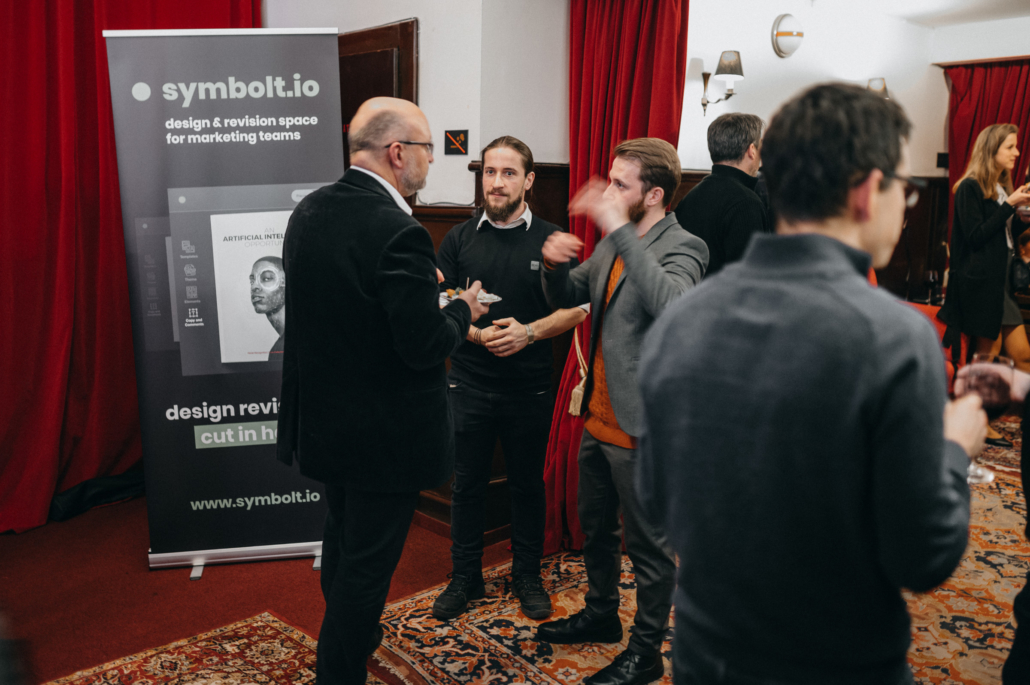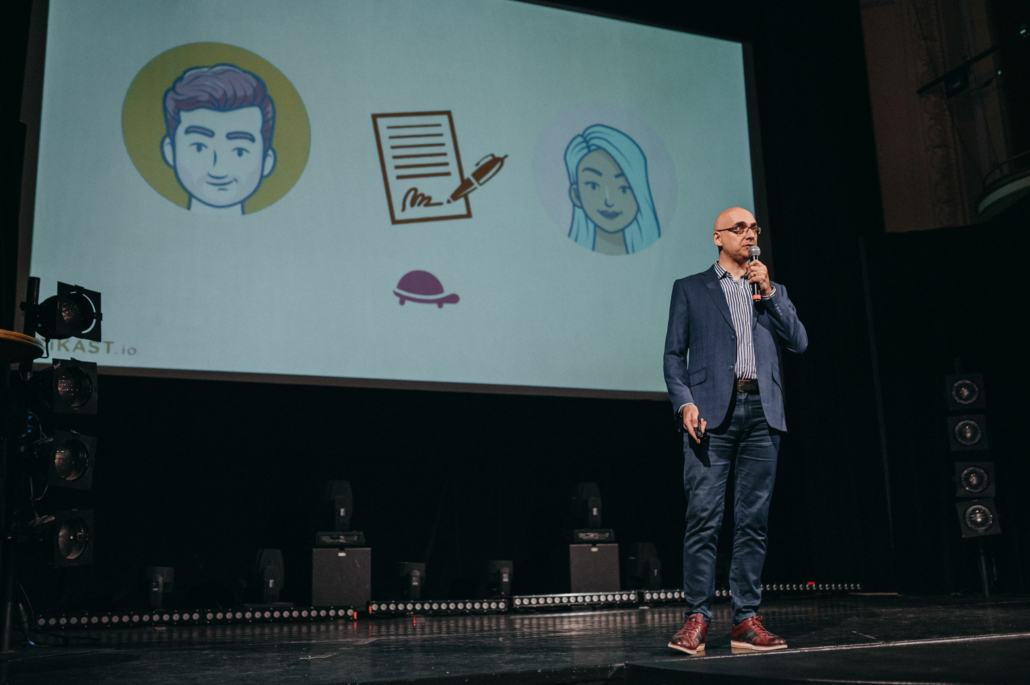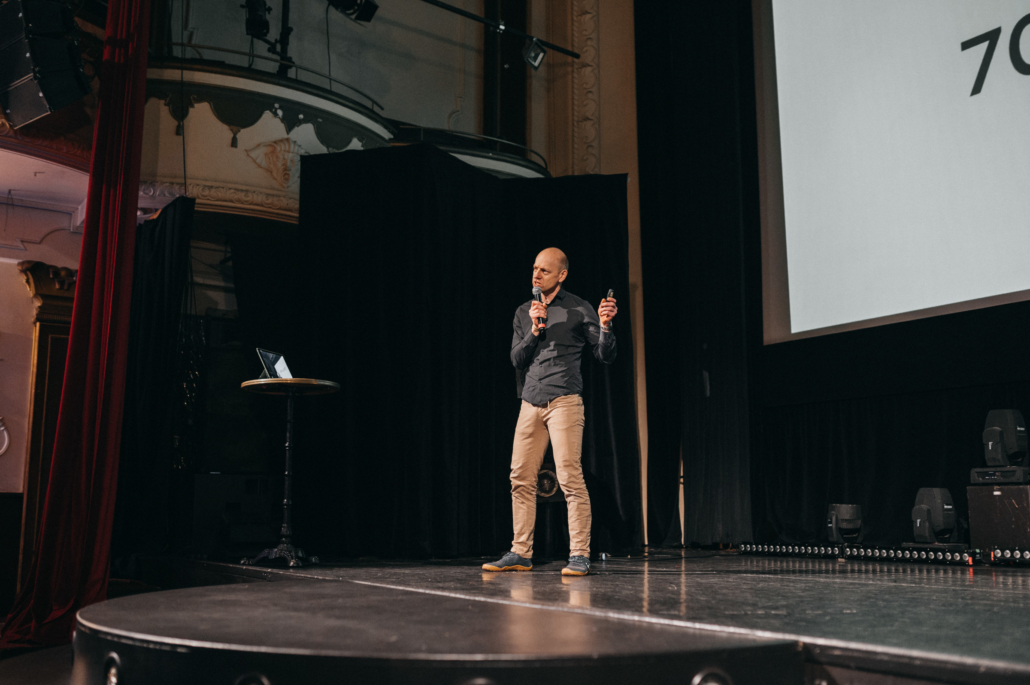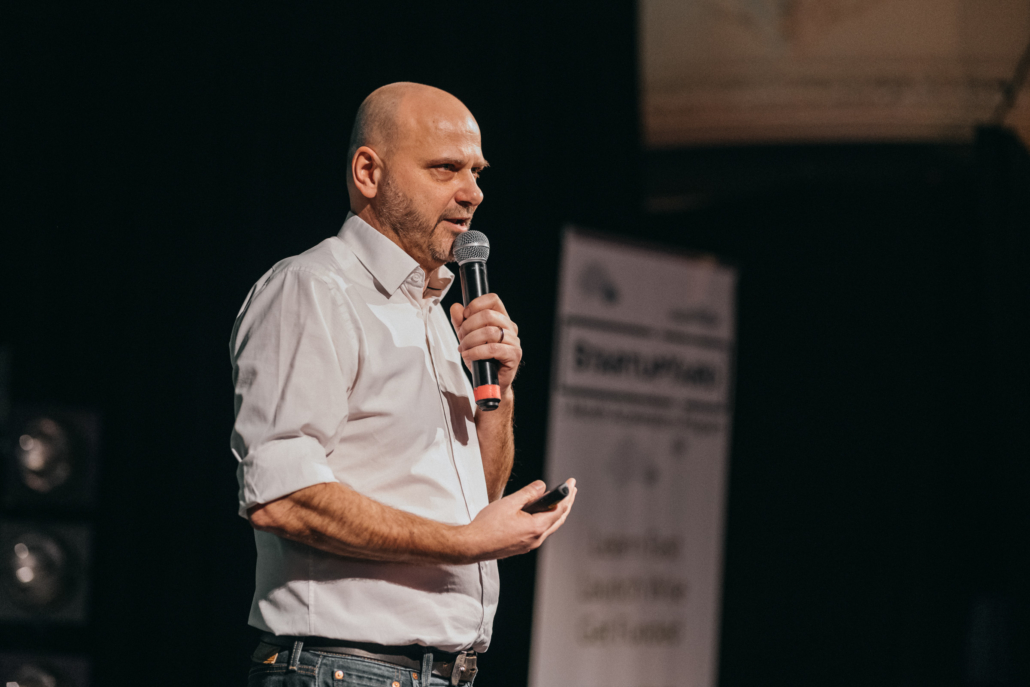StartupYard: A Hands-On Approach to Accelerating Your Startup’s Success
/in Life at an Accelerator, Startups/by StartupYardTo Accelerate or Not: Evaluating the Impact of StartupYard
/in Life at an Accelerator, Startups, StartupYard News/by StartupYard20 Pitching Tips You’ve Never Heard Before: Make Your Startup Stand Out
/in Life at an Accelerator, Startup Tools, Startups, StartupYard News/by StartupYardDemo Day Batch 11: Full Video and Snapshots
/in Life at an Accelerator, Startups, StartupYard News/by StartupYardWednesday night, February 19th, 2020, the Batch 11 startups pitched to a crowd of over 200 investors, StartupYard mentors and community members, corporate executives, and journalists, among others.
You can see the whole Demo Day, including opening remarks from StartupYard CEO Cedric Maloux in the video that was streamed lived on Facebook.
Watch Demo Day Batch 11: As it Happened
Pictures from the Event:
Scroll to the right to see all the photos.
Meet the Batch 11 Startups : DemoDay February 19th
/in Life at an Accelerator, Startups, StartupYard News/by StartupYard10 Questions to Ask a Startup Accelerator
/in Life at an Accelerator, Starting a Business, Startup Tools/by StartupYard6 Tips to Make Your Startup Accelerator Application Standout
/in Life at an Accelerator, Startups/by StartupYardMeet Urbigo: Your First Smart Home Garden from StartupYard Batch X
/in Interviews, Life at an Accelerator, Startups, StartupYard News/by StartupYardWith each new batch of startups at StartupYard, we run a series of detailed interviews with the founders to give our community a sense of who they are, and how they see the world they’re trying to change. Last week we announced 7 new companies in StartupYard Batch X. Today, we jump in with an interview of Anja Varnicic, CEO and Co-founder of Urbigo, the urban smart garden company that promises to “Bring nature closer to you.”
Urbigo is a system including a small modular garden with grow lights, and cylinders for plants containing nutrients and water. The garden is controlled via an interactive mobile app, and users can get the latest advice on how to tend to their mini gardens, as well as order new plants, nutrients, and soil packs from Urbigo.

CEO Co-founder Anja Varnicic, shows off Urbigo’s Smart Garden with company CTO and Co-founder Aleksandar Varnicic

Hi Anja, coming from a plant biology background, what made you want to turn your passion for the science into a business, helping people grow plants at home?
So, as an environmental scientist, I have long asked the question: “what role do plants really play in our lives?” The truth is that we are entirely dependant on them. For oxygen. For nutrients. For flavor, and for our wellbeing. Yet modern society has moved off the farm, and now treats plants and spices as commodities that are easily fungible between one brand and another. If not from Spain, then from Brazil. If not from Turkey, then from California.
We don’t understand where our food and our air comes from anymore, and I think that is a problem for people living in cities. Of course, we can’t expect people all to live in hydroponic greenhouses in their flats, but we should get ourselves closer to the foods that we eat and the flavors that we taste.
The way of doing that for us at UrbiGo has been to bring just a little bit of green into people’s lives, and to show them the immediate benefits of tending to plants that we depend on for everything. We came up with a focus on spices that can be grown in the urban kitchen, because not only do fresh coriander or mint taste better than dried and packaged versions, but also getting something to eat directly from a plant in your home reminds you of the life behind the things that you eat, and the natural world you depend on.
As with any other true love story, the startup idea happened unexpectedly and accidentally. I wanted to make these ideas into a real business. Luckily enough, I had a chance to share my business idea with Alex, our now CTO, who had previous startup experiences. We shared our thoughts, he loved it, and boom – UrbiGo was born!
How do you think incorporating gardening into one’s everyday life can affect positive change for somebody living in a city?

CEO Anja Varnicic is an environmental scientist and an engineer.
They say plants are the friends that always listen. And they really do. Indoor plants and urban gardening has become madly popular in the past few years because it reduces stress, make our air cleaner and our bodies healthier. And those are the thing we usually forget about or take for granted.
Having and growing fresh ingredients from your own garden is a creative activity. It brings us the same feelings we have as in making a sculpture or a painting, or writing a song. Gardening is viewed in Eastern cultures as almost poetic in nature.
For the millenial generation, we want to feel that connection to the Earth, and doing so makes us feel more responsible and more connected to nature. It makes us feel like grownups to be able to make life in an urban area where nature has seemingly little control.
I also believe that the millennial generation regrets the excessive commoditization of food. We yearn for the experience of knowing how our food is made, what it is, and how it makes its journey to our plates. So you see many different ways this is expressed in the modern consumer culture. Farm to kitchen restaurants. Farmer’s markets. Home gardens, and smart mini-gardens like Urbigo, that will help people to get back some of the control that we have lost over our diets and our environment.
]What would you say are the biggest mistakes we make when it comes to designing urban homes, and thinking about our living environment?
]Today, a larger share of younger urban residents live in rented flats or flatshares than have ever done in the past. What we see happening in cities is interior spaces being divided into smaller and smaller parts, and unless the presence of plants is part of the planning for those spaces, it ends up as a kind of afterthought.
Take a walk for example through an Ikea, which is where a lot of young people are going to get a sense of how to use their personal space… the plants are the last thing you see there. They are the afterthought. They are what you add when you have everything done.
This is backwards, I think. We need to plan more around plants, and plan to live with more plants in our personal spaces. That can affect the placement of windows, or the whole design of a building. The use of light must be reconsidered. In some cities such as Paris or Berlin now, whole buildings are being constructed with plants on their walls and rooftops. This is a good start.
Do not treat plants as a pleasant addition to your home. If you do, you will not have room for them when you decide they are the thing missing for you.
Let’s talk more about Urbigo’s products. What would you say distinguishes you from other indoor gardening solutions? What is your “killer app?”


UrbiGo isn’t just a fancy smart garden that grows fresh herbs for you – it is a community of plant lovers and enthusiasts that are changing urban gardening as we know it.
UrbiGo gardeners get to control their UrbiGo mini smart garden from their phones and learn how to grow their own fresh and nutritious ingredients in a fun and simple way through a gamified app. By completing daily challenges in the app we want to motivate and empower people to become successful urban gardeners and live more sustainably.
We take some cues from products such as FitBit, or Calm, an App for managing stress and relaxation. The way they engage millions of users into doing something good for their body and mind is something we can learn from. Tending to your garden should be a small but integral part of your daily ritual, and with UrbiGo app we want to make the process learning and enjoyable even for those who could kill a cactus.

The Urbigo App
Now is an interesting time for home gardening, because today urban millennials are becoming used to healthy lifestyle daily rituals using technologies like smartphones and watches. We don’t want to suck people into paying attention to their phones, but rather to use the medium of the smartphone to help people live a healthier and more satisfying life, and live in a better environment.
Suppose that urban gardening becomes the norm for people living in cities 10 or 20 years from now. How else would you like to change the way we design our lives around food, cooking, and living spaces in the future?
Since we tend to spend most of our days in offices and indoor spaces, I believe it will be essential to stay connected with things that matter most like family, friends and nature. Plants and greenery have this power to gather people, especially in urban areas where those are scarce. And we wanted to make this values approachable and simple for our users which inspired us to create product and a network of like minded plant lovers and untaped enthusiasts.

Many people living in cities rarely if ever buy fresh spices and ingredients for cooking. What are they missing out on? What are some of the concrete benefits of growing at home?Besides improving your overall health, growing and consuming your own fresh ingredients makes you connected with nature and origin of your food, that obviously doesn’t grow on market shelves and from plastic packaging.
We’ve heard lots of complaints from our customers, that store-bought herbs dry out in a matter of a few days and don’t have the fresh and intense tastes they’ve come to expect. Once you have something fresh, it can be very striking to taste the difference between that, and something not fresh. So I think people should have more choice about what to consume and when to consume it – this is why the UrbiGo app educates consumers about the benefits of “growing your own ingredients” so you can make proper decisions about your health and wellbeing. Be better informed, and make more informed decisions.
Food gardening is most of all a local and sustainable way of producing fresh ingredients and educating your family on where your food comes from. As cities transform into concrete jungles, this kind of relationship with nature will become crucial for us future generations’ well-being.
As a business, where would you like Urbigo to be 5 years from now? What will be your metric for having accomplished your mission?
We go where our customers needs are, and thus we are experimenting with the ways to include smart indoor gardening into every future home. The next logical long term step would be to incorporate UrbiGo into the smart home device network because there is a space and interest in companies for the next gen “plant device” that would improve urban health and connect with their low-friction lifestyles.
For now our goal is to get a smart garden into every home, and turn that into a network of people who are thinking much more about their well-being, health and importance of food gardening.
Imagine, using smart home technology to, in a way, bring us back to an earlier age when you would ask your neighbors for an egg or a cup of sugar. Maybe in 5 years you will be able to use UrbiGo to compete in urban gardening skills with your neighbor, grow chillies in your office desk or have a “green pet” for your kids. Maybe it will lead to people sharing much more of their domestic lives and spaces with each other, and helping each other to live better.
I think these very locally focused changes will be a very important part of the smart-home of the future. Not that you are one home connected to the whole planet, but that you are one home connected to the homes around you as well. We all share one environment, and the best way to improve it is to connect and learn together.
You’re employing a number of new technologies in Urbigo’s gardens already, like 3d printing, and LED lighting. How do you see technology making urban gardening even easier in the future?
New technologies have allowed urban gardening become more “smart” and resilient to climate change effects we are experiencing. So you don’t have to be dependent 100% on sunlight, ever changing weather conditions or your personal skills and knowledge .
But, still, people don’t want technology to do everything for them, because growing and tending plants can be part of a soothing ritual as well. I see technology as a tool to make your everyday life greener, easier but also to empower you to learn and share your urban gardening experience with others. We cannot stop urbanization, but with technology we can help people stay connected with nature.
Has there been a major surprise for you since joining the StartupYard program? Did you learn something you weren’t expecting to?
I’m not sure if it was a surprise, but we have certainly noted that the interest in smart gardening in the corporate and business spheres are also growing very fast. I think as millennials begin to move higher in large organizations, this is going to become an area where we can have a big impact with our product.

The Urbigo Founders brought some life into StartupYard this round
People spend up to half their time in offices, and in many cases, these spaces are poorly adapted to keeping people healthy and happy. Companies are understanding more and more that the total wellbeing of their employees is a vital consideration, and that if they cannot provide a better environment for people, then workers will go to those who can. I think this is very positive, and I hope to continue to raise people’s standards for their immediate environment, and inspire people to demand greener workplaces.
What have been your team’s biggest personal or professional challenges in making this project a reality?
We’ve been able to grow the waitlist for UrbiGo to over 500 people and we got major interest not just from individuals but also corporates. One of the challenges for us, as we are engineers, was to let go of some of our ideas about what people should like, and really listen to what our customers are saying about what they want.
You can come up with great ideas, but if you can’t get your ego out of the way, you will miss the experiences and stories that really define who your customers are, and how they see your products fitting into their lives. Learning this at the beginning of our startup journey was crucial to get first sales, traction and investments.
We cannot stop the technology and urbanization, but we have to design a product that accommodates our customer’s fast paced life and needs and also engages them into doing something little everyday that is good for themselves. This is an ongoing process but we are happy that so many people help us do that and share our vision.
What do people need to get started with their own urban gardens? How can they get their hands on an UrbiGo smart garden?
Since UrbiGo does not require big space, plant knowledge or time but accommodates to your lifestyle, you are basically one click away from starting to grow your mini indoor garden.
We have had testers out in the field for a whole, and we’re ready to go live. Right now, we are taking signups for a special, limited first batch of Urbigo gardens for those real enthusiasts who are ready to join our smart urban gardening community. This exclusive run will start delivery in December 2018, and the wider public will be able to order from Urbigo during the next year.

Guest Post by Ondrej Krajicek: What It Means to Be a Mentor
/in Interviews, Life at an Accelerator/by StartupYardAbout Ondrej Krajicek
Ondrej Krajicek is Chief Technology Strategist for Y-Soft, and Y-Soft Ventures, a Brno-based printing and 3d manufacturing tech company where he has been a team member since almost the beginning. Ondrej is a dedicated startup mentor, and a longtime member of our community, where he has published his thoughts and unique perspectives on the technology business and other topics many times. Today Y-Soft is one of Czechia’s few technology “unicorns,” and serves large and small companies all over the world. At Y-Soft, Ondrej considers it his mission to grow the Czech economy by encouraging technologists to focus on crafting superior products and relying on their best skills, rather than focusing on cheap labor and manufacturing.
What It Means to Be a Mentor
Thank you StartupYard for giving me the opportunity and looking forward to the next cohort.
I should have started writing this article after my mentoring day at StartupYard, which is November 21st. Having past experience with several cohorts, I just could not resist and started as soon as I got the idea. So it is rather sunny day in Texas and I am looking forward to working with StartupYard and the incubated startups once more. I am writing this to give myself more clarity on why am I doing this, what should I deliver to the startups I am going to talk to and what should be my take aways from the day. I also have a tiny ambition that this may change somebody’s perspective on mentoring and improve the experience for any mentors out there and those being mentored as well.
I have been working with StartupYard since 2014 and it has been a tremendous experience. They truly have a great team with three people who really stand out: Helena who handles all the scheduling, Lloyd who does a great job with no-nonsense PR (a true rarity in Europe) and Cedric, who leads it all.
You are not the smartest guy around…
I will never forget two immortal quotes from Bohumil Hrabal in Slavnosti sněženek: “Máte štěstí, že jedu kolem.” and “Říkají o mně, že jsem odborník.” Apologies for Czech, it really never gets old.
10 years ago, having been invited to be a mentor, I would probably feel honored and entitled. If repetition is the highest form of flattery, than asking someone to be your mentor is definitely the second highest. And after the thrill of being asked to mentor dissipates, the first thing I need to consider is my responsibility to the teams I am going to work with.
Being a startup team in a world class accelerator is an overwhelming experience. There is little time for everything and spending time with a mentor is an important investment on the team’s side. They are investing time, energy and money in that discussion, regardless of its length. And as a mentor I should never forget that.
I am not a mentor because I am the smartest guy around. I am not a mentor because I am successful. I am a mentor because I had to solve problems, perhaps similar problems in different contexts and I, my team and company survived to see another day.
So how can I make sure that the discussion is worth their while?
Be Useful
One of the best mentors I had the chance to meet, Ken Singer taught me one of the key principles of Silicon Valley: Pay it Forward. If someone seeks your help, help them — without expecting anything in return from them. Someone else, some other time, will help you too. Next time you are pondering how to replicate Silicon Valley success in the Czech Republic, think about this and the culture which is preventing this simple approach to take of here.
How does this apply to being a mentor? Do not expect any tangible benefit in return. You will not get shares or money just because you graced someone with your presence and shared your experience. Certainly not by answering few questions.
Being useful means adopting the mind set of freely sharing anything and everything which feels relevant to the situation. Connecting people with people.
Tell Stories
The real problem is that sharing is difficult. Robert Kaplan gave a great talk about mentoring which is available on YouTube.
If there is one principle I need to follow, one thing to take from Robert Kaplan, than it is that I should not tell them what to do. Kaplan claims that mentoring advice is only as good as the story, but what if it’s you telling them stories. Stories are about context, problem, solution and lesson — just like bedtime stories of our childhood. Just this time, it’s about business.
Instead of asking them to tell me their story and risking, that my advice would only be as good as their story, I should tell them mine and let them take what they feel they should.
I see mentoring as a form of leadership. This is the less obvious kind where I do not manage anyone, certainly not the team I am talking to. My biggest power over the team is listening.
That is easier said than done.
Ask the right questions
I usually start with three questions:
- How can I help you today?
- What can I help you with?
- Can I have a whiteboard please?
But no, these are not the right questions. As Kaplan teaches, leadership is about finding the right questions and my “right” questions are about users, employees and customers.
- Why is anyone going to pay you for your services or products?
- Why should people work for you?
- Why should your customers choose you and not your competitors?
The hard part is not asking these questions, but feeling the answers.
Own It
In 2015, Harvard Business Review published a nice article about how it is impossible to put yourself in the proverbial shoes of your customers. Cutting to the conclusion, I am not trying to put myself in the shoes of their customers.
I need to become one. This is where my stories help. May be, sometime in my past, I was in a situation which would require products or services of the team I am talking to today. My experience, if it is relevant, kicks in when we start debating the need, the constraints involved and how is their solution solving the problem. Which is now — for the time being — also my problem.
Mentoring is like acting. I love theatre: drama, comedy, opera, but I would be terrible actor. But here I can immerse, I just need to be authentic.
Share beliefs
Authentic means that I need to tell them the truth. Not that I expect to lie or think that some mentors lie, but if I am not authentic, they cannot trust me and probably won’t. This is not a place and time for rhetorical alchemy as I am not here to influence: no careful dosing of ethos, logos and pathos. I am a stand and a big bazaar and the mentored team shall pick only what they like. I am not a major stakeholder as I am not materially vested in the team’s success. I am here as a volunteer.
Acting, management and mentoring are alike at least in one more thing: filtering does not work. So how should I establish authenticity? I need to share my beliefs. How can I prove myself? By story telling again. After all, marketing is all about proof points, isn’t it?
When the team shares my beliefs and values, they understand my story and how is it relevant to their products and services, they are in the position to take some advice.
Teach? Share failures!
Merriam-Webster defines the noun “mentor” as a trusted counselor or guide. Having the right context from the team, being their customer at the moment and consistently with my beliefs and values, I am ready to share advice. What I did and how it worked. What I did and how it failed.
In my experience, the best way to share knowledge with others is to share your failures. When I succeed in something, I am seldom completely sure why I succeeded. When I fail, sooner or later I find out why exactly I failed. Failing gives me clarity and confidence. I am never giving up and I dare say that I learned to patiently and diligently study the failures I was part of, my failures or failures of my team.
That clarity and confidence also enables me to share it with the team. It is their choice whether they want to repeat mistakes of others or make their own mistakes.
Not that I agree with the failure worshipping, which seems to be a thing in the startup culture. As Tomas Sedlacek put it in his tweet, I strongly preffer trial-success than trial-error. I also believe in failing fast and measuring hard, which I will probably never fully learn.
And I am not as selfless as it may seem. There has to be something in this for me.
Why am I here today?
Mentoring is a learning experience, so first and foremost, I am hear to learn. Occasionally, I learn about new approach, business model or technology. I used to focus on that.
Today, I am here to train. To stretch my muscles in a different way than I am stretching them every day at work. If you ever exercised with a trainer, you know that your trainer is changing your exercise quite often. You are doing something else on Tuesday than you did on Monday.
Change is good as human body excels at adaptation and always finds equilibrium of achieving results with minimal energy. Human brain is no different and is actually great at building and making mental shortcuts. I am here to train active listening skills in extreme conditions (time is short), maintain an open mind and apply what I know on problems I do not have. I am here to push myself for patience, which is one of my biggest weaknesses.
And I am here to relax. Other teams and other people struggle with difficult issues too. Others are also trying to do what they believe in.
I am not alone in this.





